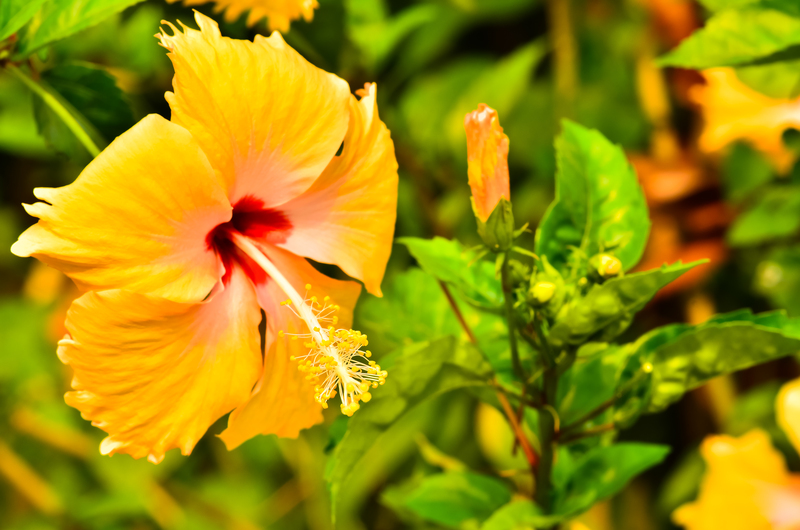The Essential Guide to Lawn Mowing Poplar Trees
 Maintaining a healthy poplar tree involves proper lawn mowing techniques. Poplar trees are known for their rapid growth and vibrant foliage, making them a popular choice for both residential and commercial landscapes. Understanding how to mow around these trees ensures their longevity and aesthetic appeal. In this article, we will explore various aspects of lawn mowing for poplar trees, providing you with the knowledge to keep your landscape looking its best.
Maintaining a healthy poplar tree involves proper lawn mowing techniques. Poplar trees are known for their rapid growth and vibrant foliage, making them a popular choice for both residential and commercial landscapes. Understanding how to mow around these trees ensures their longevity and aesthetic appeal. In this article, we will explore various aspects of lawn mowing for poplar trees, providing you with the knowledge to keep your landscape looking its best.
Poplar trees, belonging to the genus *Populus*, are admired for their height and graceful appearance. They thrive in a variety of soil types and climates, making them versatile for many gardening projects. However, their fast growth rate means that regular maintenance is crucial to prevent overgrowth and potential issues with nearby structures or power lines.
 One of the key considerations when mowing around poplar trees is the height at which you cut the grass. Poplar trees can overshadow lawns, leading to uneven grass growth. By adjusting your mowing height, you can encourage a more uniform lawn while ensuring that the tree's roots remain healthy and unobstructed.
One of the key considerations when mowing around poplar trees is the height at which you cut the grass. Poplar trees can overshadow lawns, leading to uneven grass growth. By adjusting your mowing height, you can encourage a more uniform lawn while ensuring that the tree's roots remain healthy and unobstructed.
Proper lawn mowing techniques not only enhance the appearance of your poplar trees but also contribute to the overall health of your landscape. It's important to use sharp mower blades to make clean cuts, which reduces stress on both the grass and the tree roots. Dull blades can cause ragged edges and increase the risk of disease.
In addition to mowing height, the frequency of mowing plays a significant role in maintaining a healthy lawn around poplar trees. During peak growing seasons, you may need to mow more frequently to keep up with the rapid growth of both the grass and the tree.
 Fertilizing your lawn appropriately can also support the health of poplar trees. Choose a fertilizer that is suitable for both grass and trees, ensuring that the nutrients are distributed evenly without causing harm to the tree's root system. Avoid over-fertilizing, as excessive nutrients can lead to uncontrolled growth and other issues.
Fertilizing your lawn appropriately can also support the health of poplar trees. Choose a fertilizer that is suitable for both grass and trees, ensuring that the nutrients are distributed evenly without causing harm to the tree's root system. Avoid over-fertilizing, as excessive nutrients can lead to uncontrolled growth and other issues.
Regular lawn mowing around poplar trees helps prevent the buildup of thatch, a layer of dead grass and roots that can inhibit water and nutrient absorption. Thatch management is essential for maintaining a healthy lawn and supporting the vigorous growth of poplar trees.
Another important aspect is the timing of your mowing activities. Avoid mowing during periods of extreme heat or drought, as this can stress the trees and grass. Early morning or late afternoon are generally the best times to mow, allowing the grass to recover before the heat of the day.
 Implementing proper irrigation practices complements your lawn mowing routine. Consistent watering ensures that both the grass and poplar trees receive adequate moisture, promoting healthy growth and reducing the risk of disease. Drip irrigation systems can be particularly effective in delivering water directly to the root zones.
Implementing proper irrigation practices complements your lawn mowing routine. Consistent watering ensures that both the grass and poplar trees receive adequate moisture, promoting healthy growth and reducing the risk of disease. Drip irrigation systems can be particularly effective in delivering water directly to the root zones.
Integrated pest management is also crucial when maintaining lawns around poplar trees. Regularly inspect for signs of pests or diseases that can affect both the grass and the trees. Early detection and treatment can prevent minor issues from escalating into major problems.
Mulching around poplar trees provides additional benefits, such as retaining soil moisture, regulating temperature, and suppressing weed growth. Organic mulches like wood chips or bark are ideal choices, as they decompose over time, enriching the soil with valuable nutrients.
 In conclusion, effective lawn mowing practices are essential for the health and beauty of poplar trees. By following these guidelines, you can create a harmonious landscape that showcases the splendor of poplar trees while maintaining a lush, green lawn. Regular maintenance, proper mowing techniques, and mindful care will ensure that your poplar trees thrive for years to come.
In conclusion, effective lawn mowing practices are essential for the health and beauty of poplar trees. By following these guidelines, you can create a harmonious landscape that showcases the splendor of poplar trees while maintaining a lush, green lawn. Regular maintenance, proper mowing techniques, and mindful care will ensure that your poplar trees thrive for years to come.

